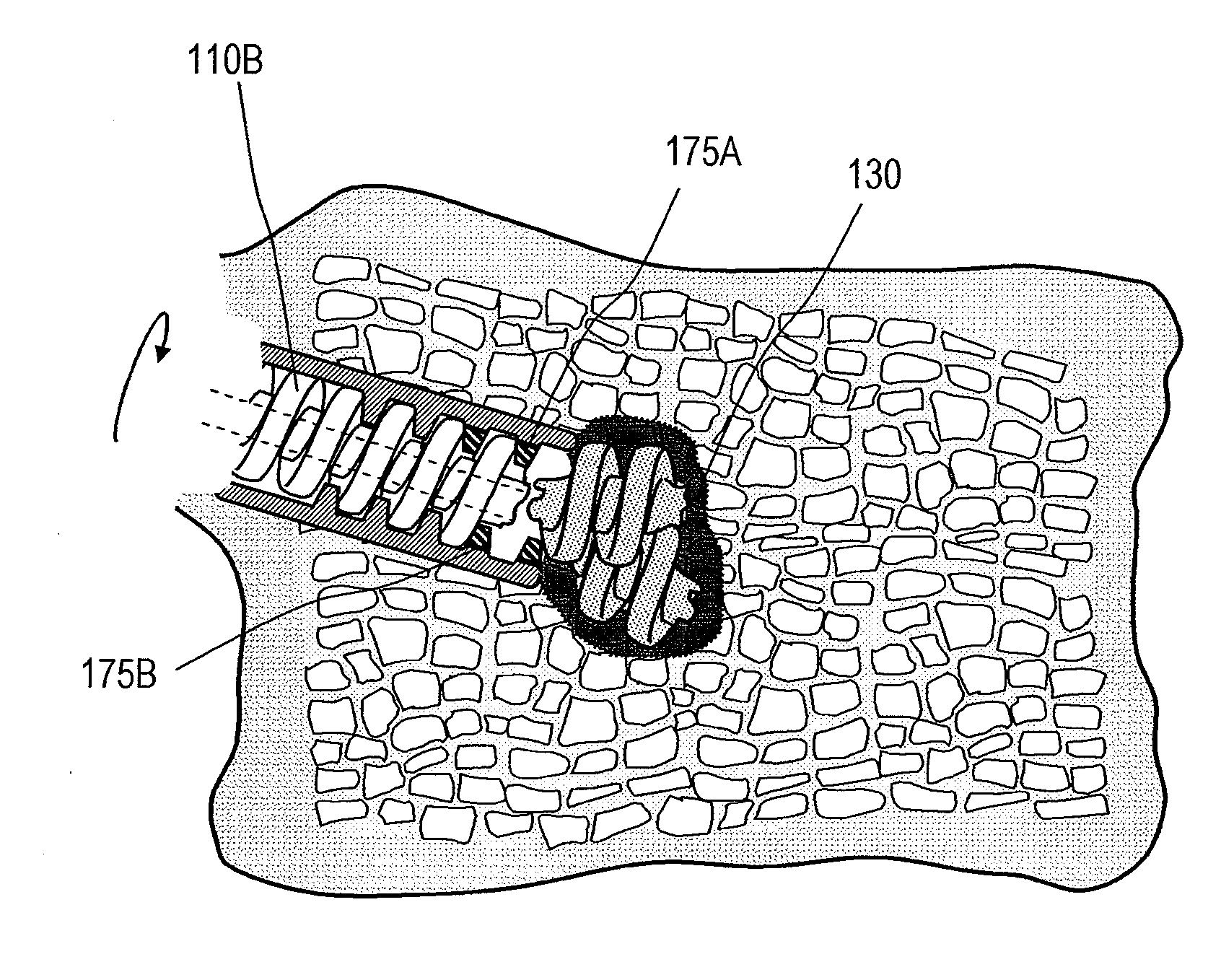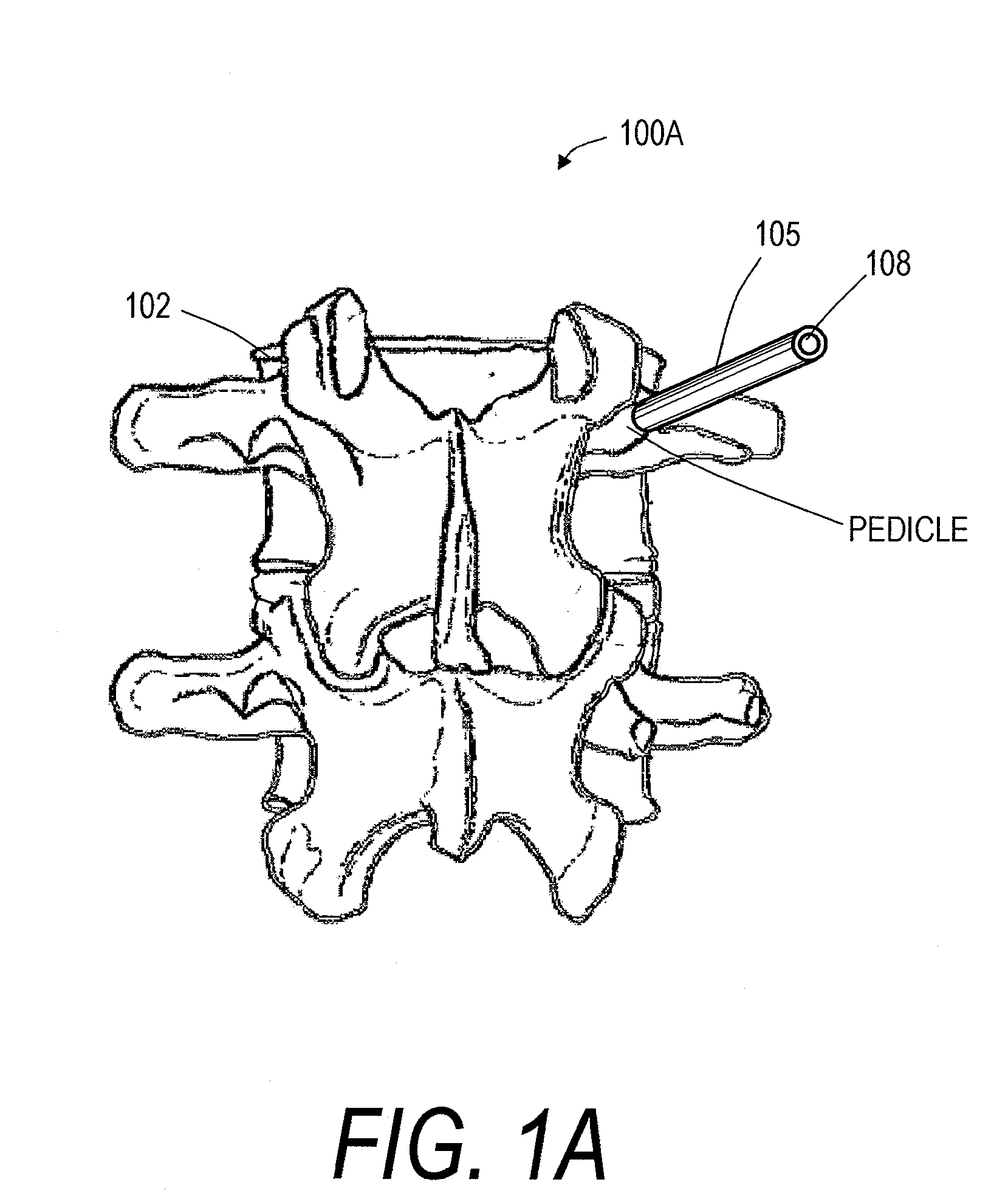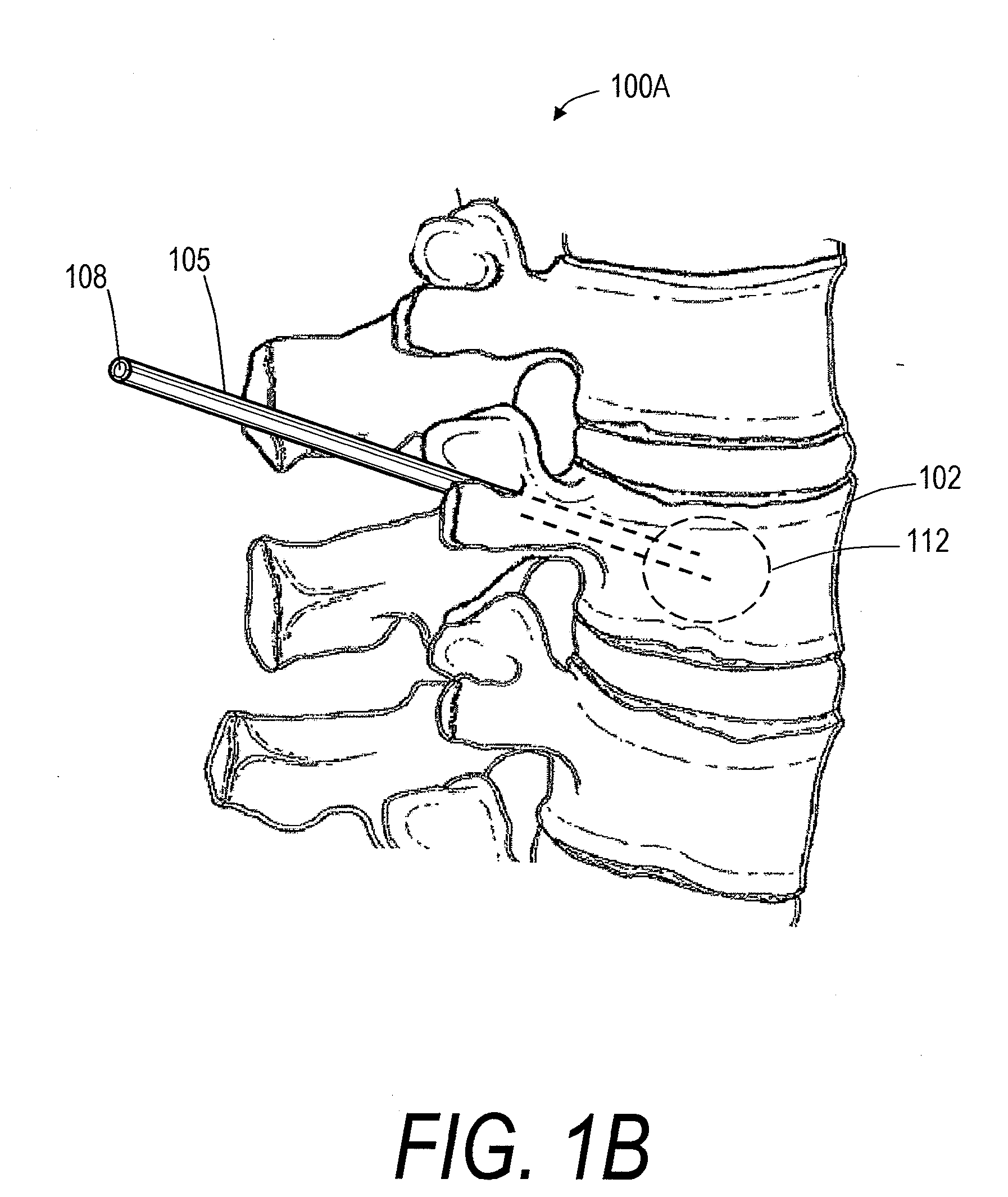Systems for treating bone
a technology of bone and bone, applied in the field of osteoplasty procedures, can solve the problems of fractures in the spine and hips, affecting mobility and quality of life, and the medical advances aimed at slowing or arresting bone loss from aging have not provided solutions to this problem
- Summary
- Abstract
- Description
- Claims
- Application Information
AI Technical Summary
Problems solved by technology
Method used
Image
Examples
Embodiment Construction
[0043] Referring to FIGS. 1A and 1B, one embodiment of bone fill introducer or injector system 100A is shown that is configured for treatment of an abnormal vertebra 102 such as in the case of a vertebral compression fracture. Introducer system 100A as in FIGS. 2A-C includes introducer sleeve 105 with passageway 108 therein that is configured for the introduction of an elongated implant body 110A therethrough to a targeted site 112 in a vertebra (see FIGS. 1A-1B). As can be seen in FIG. 2, the elongated implant body 110A has a first configuration that is substantially unyielding along a longitudinal axis 115 of the body. The term “unyielding” as used herein means that the implant body is substantially rigid, inflexible and sufficiently strong to allow the implant to be axially pushed or driven through passageway 108 in the introducer sleeve 105. The implant body is preferably of a polymeric material, a ceramic material, a glass material or a combination thereof that allows transform...
PUM
 Login to View More
Login to View More Abstract
Description
Claims
Application Information
 Login to View More
Login to View More - R&D
- Intellectual Property
- Life Sciences
- Materials
- Tech Scout
- Unparalleled Data Quality
- Higher Quality Content
- 60% Fewer Hallucinations
Browse by: Latest US Patents, China's latest patents, Technical Efficacy Thesaurus, Application Domain, Technology Topic, Popular Technical Reports.
© 2025 PatSnap. All rights reserved.Legal|Privacy policy|Modern Slavery Act Transparency Statement|Sitemap|About US| Contact US: help@patsnap.com



